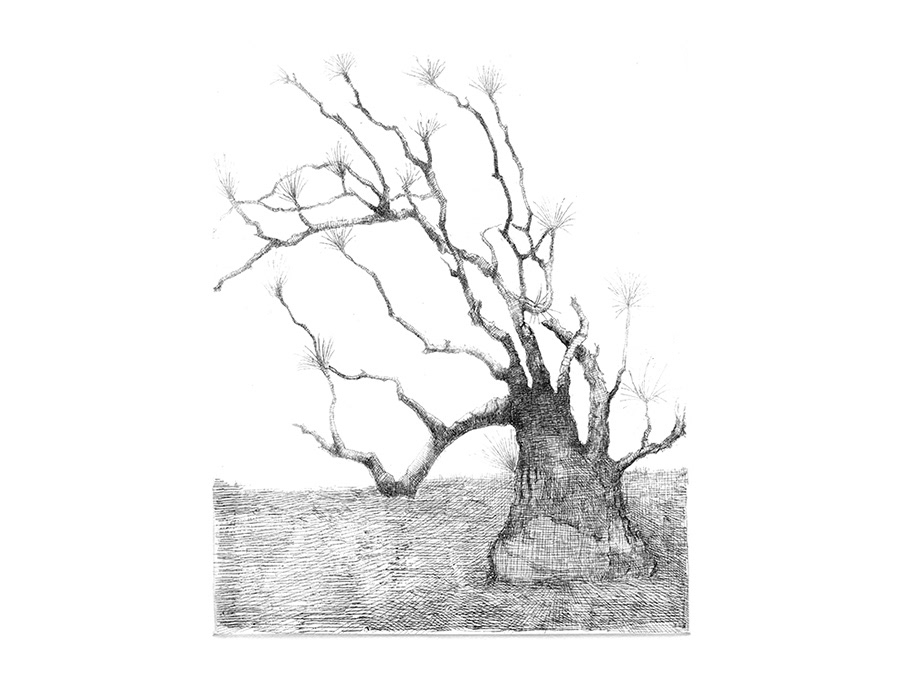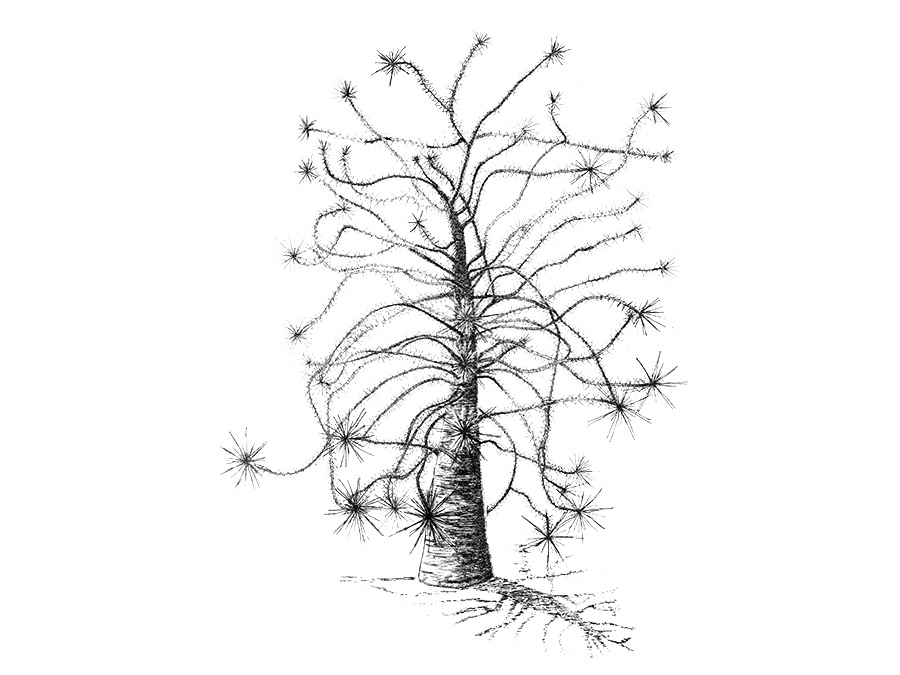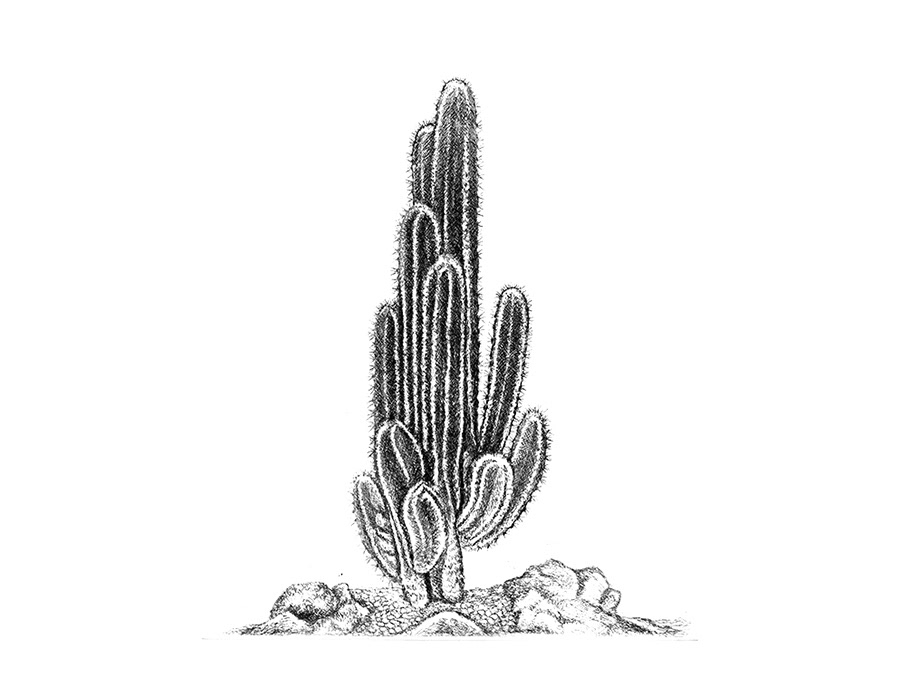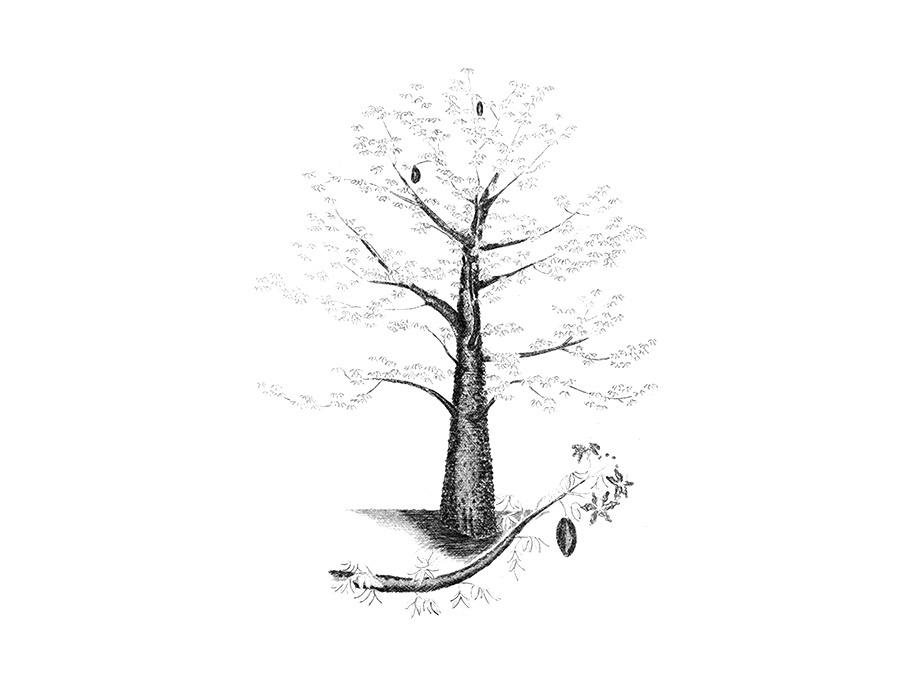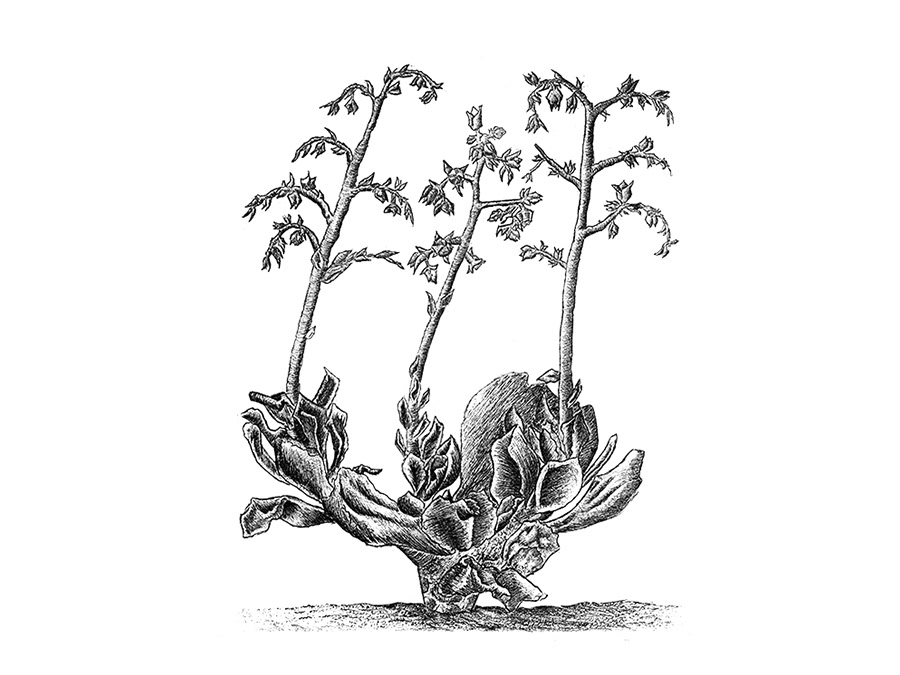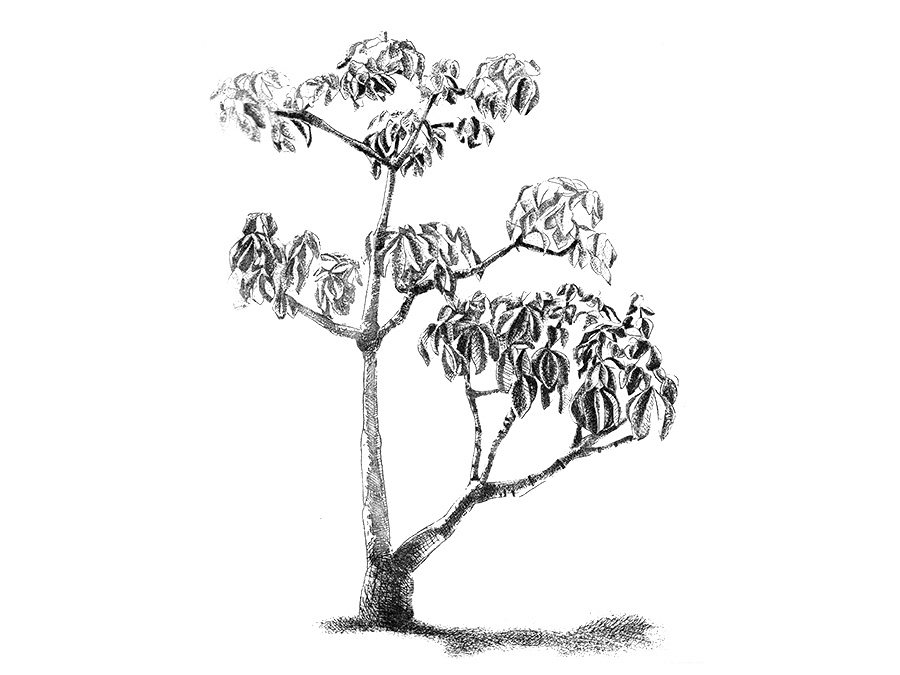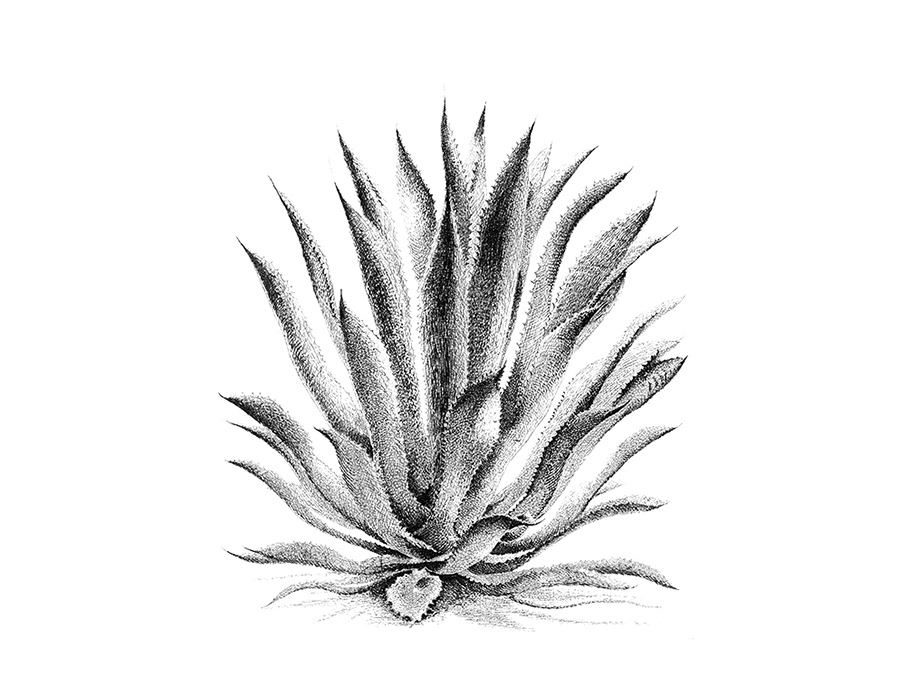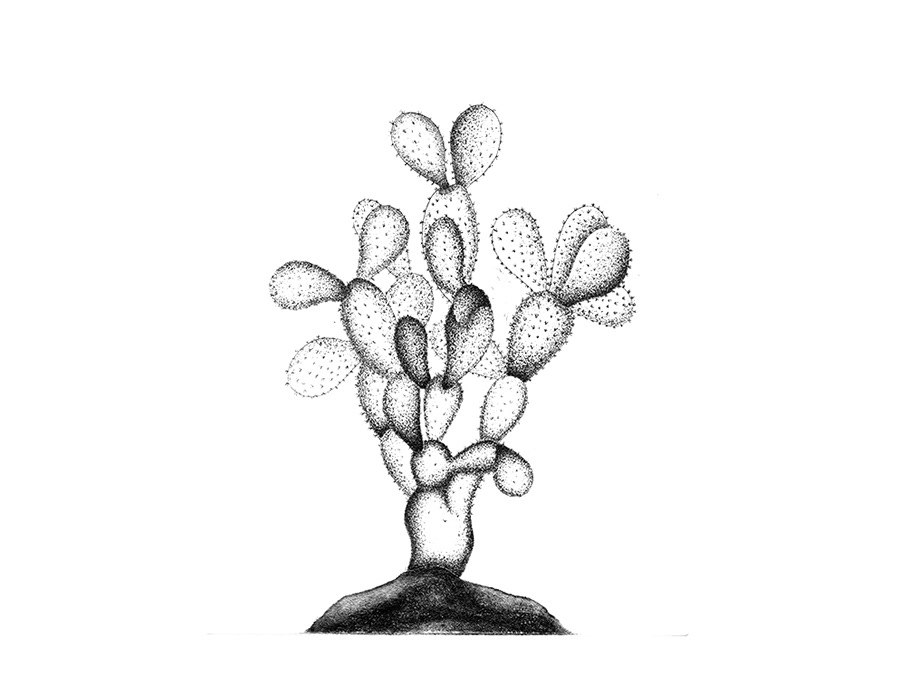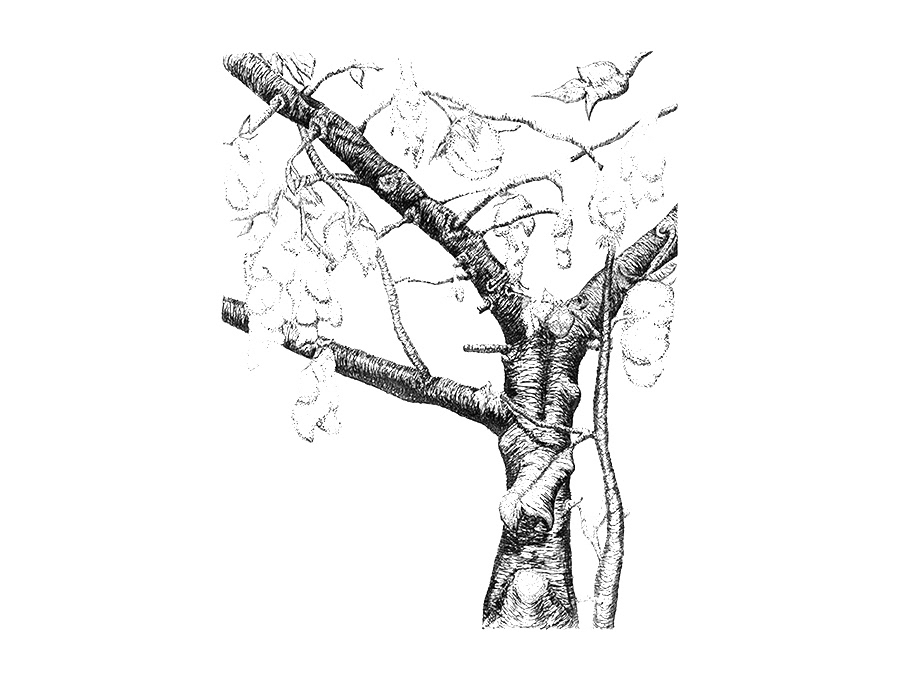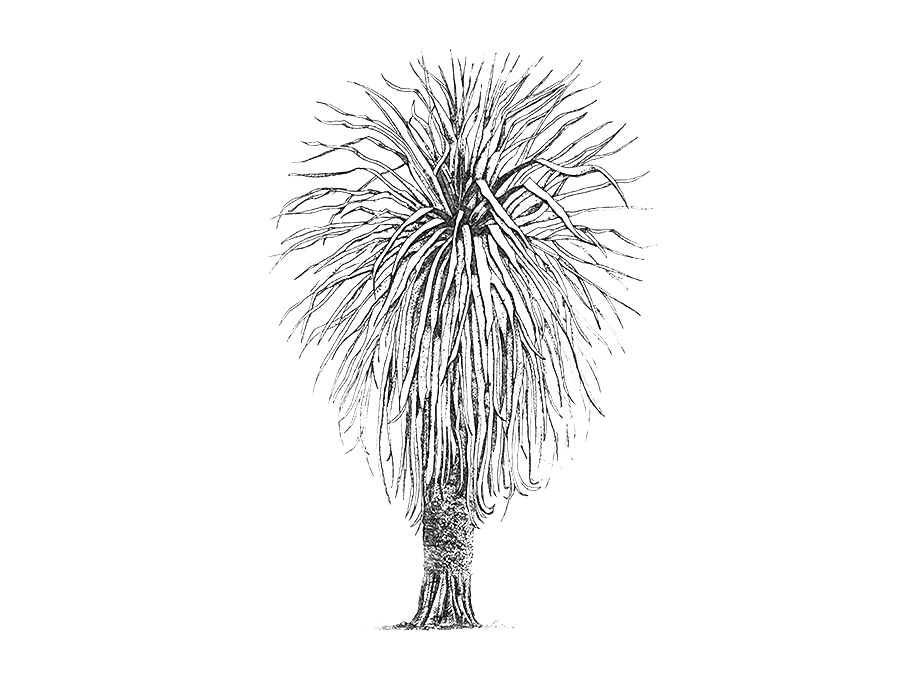Maguey Espadin • Agave angustifolia
The sprat drawn with his quiete flourished and died in the Garden. The wild populations of this species, which grow in various types of vegetation in most of the State, are used to extract fiber. The flowers are eaten cooked, and the dried stilles are used to build fences and roofs. The espadín is cultivated in the Sierra Sur and the Valley of Oaxaca, where this specimen comes from, to make mezcal. In fact, it is currently the most important maguey in the state. Tequila producers in Jalisco buy part of the crop. The growing demand for agave liquors in Europe and North America is encouraging the expansion of espadín cultivation in Oaxaca. Year after year, large extensions of dry forest are destroyed in the upper basin of the Huantepec River and other areas, where the glaucous leaves of this plant planted row after row recall a landscape of Neruda in his memoirs: “Mexico is an infinite field of magueyes of steel blue dye and yellow crown of thorns.” The word mezcal has very ancient resonances. Mexcalli means 'roasted maguey' in Nahuatl. Even today, the homemade agave pineapple (that is, the heart of the plant) is called 'mezcal', which is sliced and sold as a sweet in the streets. The honey is sucked out and the bagasse is spit out. The process to prepare the candy is the same as that used to make the drink: a good-sized hole is dug where a large fire of thick wood is lit. Large stones are placed between the logs. When the embers have been consumed and the stones are very hot, the maguey pineapples are put in the oven and covered with earth. They cook like this for two or three days. The juice that is squeezed from the baked pineapples is fermented and distilled to make mezcal or tequila. archaeologists have found maguey ovens and chewed bagasse from ten thousand years ago in the valleys of Tehuacán and Oaxaca. Few plants in the world have been processed in the same way for so long. The distillation of mezcal, on the other hand, is recent: it seems to have only become popular in the 18th or early 19th century. A source of intoxication, the sprat evokes some verses from La Serenata de México: “…and the clay and the stone raised on the nuptial shore of the oceans were populated with thorns, with agaves whose jade opened through its wounds the alcoholic eyes of sleep and Of anger. So among the bushes butterflies and bones of the dead, poppies and forgotten gods gathered. But the gods did not forget." I end as I began, citing Neruda's confessions and Isla Negra Memorial. Thanks to M.C. Philip. Palma Cruz of the Technological Institute of Oaxaca the identification of this species. Bibliography: Flannery, Kent V (ed.) 1986 Guilá Naquitz; Archaic foraging and early agriculture in Oaxaca, Mexico. Academic Press, Orlando. Neruda, Pablo 1957 Works 11. Editorial Losada, Buenos Aires. (The Serenade of Mexico is part of El Cazador de Raíces, fourth section of the Isla Negra Memorial) Neruda, Pablo 1974 I confess that I have lived. Regards. Seix Barral, S.A., Barcelona. Palma Cruz, Felipe de Jesús 1991 The genus Agave L. and its distribution in the State of Oaxaca. Professional thesis in biology, ENEP Iztacala, UNAM, Mexico, D.F.
You may also like
